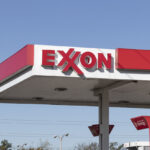From Forbes
The report in the Dallas Morning News Wednesday morning that Pioneer Natural Resources has decided to divest all other assets in order to focus exclusively on the Permian Basin confirms what many have already known: the Permian truly is America’s “Super Basin,” or as others prefer to call it, Saudi Texas.
After all, it isn’t as if the assets Pioneer will divest are just your basic oilfield garbage: They include roughly 70,000 acres of prime acreage in the Eagle Ford Shale region, in which Pioneer was an early and very successful player. They also include some prolific natural gas acreage in deep South Texas and in the Raton Basin along the border between Colorado and New Mexico.
Pioneer is a company that has had a strong record of success wherever it has produced; thus, it’s decision to focus exclusively on the Permian is strong testimony to both the magnitude of the resource available in that region, and the prime economics offered by prolific oil and natural gas formations stacked one atop another throughout a vast region that is larger than the state of South Carolina.
The timing of Pioneer’s announcement is interesting, coming as it does on the same day that Halcon Resources announced a $381 million acquisition of 22,000+ acres in the Delaware Basin part of the Permian, just a few weeks after Oasis Petroleum had announced its own 20,000+ acre entry into the region, and barely a week after ExxonMobil announced its plans to triple its production from the Permian over the next five years. The pace of deal-making and capital investment related to the Permian region had slowed noticeably during the second half of 2017, as management teams focused more capital dollars on programs designed to maximize investor returns, but it now appears to be heating up once again early in the new year.
Meanwhile, I’m not the only one making comparisons between the Permian Basin and Saudi Arabia. In remarks delivered at a recent conference, Nansen Saleri, former head of reservoir management at Saudi Aramco, drew his own analogy between the two oil producing provinces. According to Saleri, who is now CEO at Quantum Reservoir Impact, oil producers in the Permian Basin combined currently have between 500,000 and 1 million barrels a day of idle oil production capacity. By comparison, Saudi Arabia’s current spare capacity is about 1.5 million barrels a day, according to data compiled by Bloomberg.
Of course, the mere existence of excess capacity does not mean Saleri’s is an apples to apples comparison. Where Saudi Arabia’s oil ministers are able to determine their nation’s overall production and export levels through central planning, hundreds of companies independent from one another determine the Permian’s production output based on their own internal decisions, which are responsive to market forces. As well, the Permian basin itself currently finds itself in a bit of a constrained situation due to a shortage of pipeline takeaway capacity.
Thus, one of the reasons for its current excess capacity in the Permian is that there are hundreds of wells that have been drilled but not yet placed into production. That constrained situation will be gradually relieved as the dozen or so pipeline new builds and expansion projects on the books come to completion, and the amount of that excess capacity will diminish.
Per to the DrillingInfo daily rig count, Texas is home to roughly 60% of all the active drilling rigs in the U.S. Two-thirds of those rigs are active in the Permian Basin. As the announcements by Pioneer, ExxonMobil, Halcon and Oasis indicate, we should only expect that percentage to keep rising in the years to come.
If you’re in the oil and gas business, “Saudi Texas” really is the place to be.







